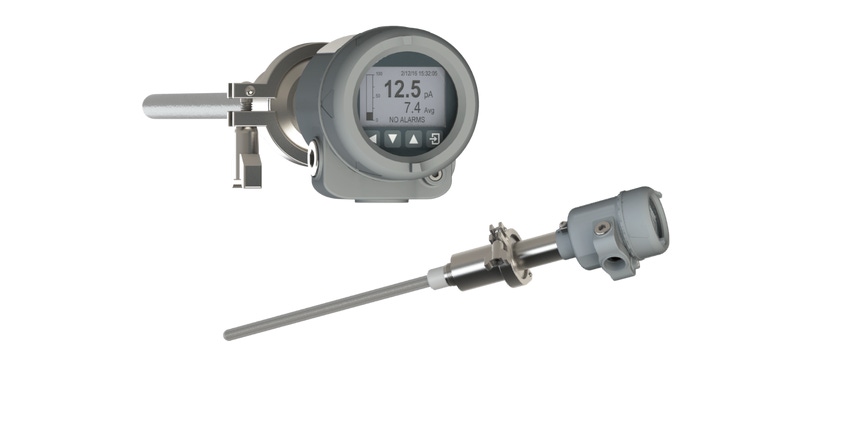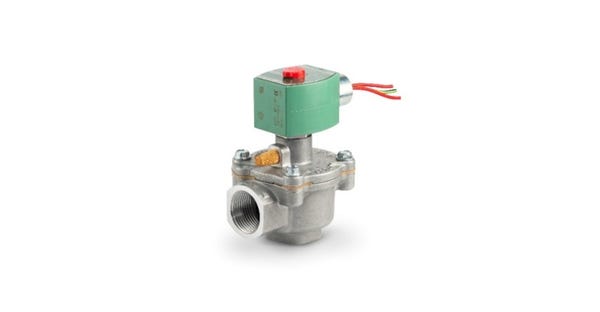Improving Dust Collection with Intelligent Automation
Smart technologies make it possible to optimize dust collector processes from the plant floor to the cloud.
September 22, 2023

Olivia Demkowicz, product marketing manager, Emerson
Dust collector systems are essential to sustaining safety and productivity in production facilities that focus on processing dry powdered products and bulk solids. These facilities all depend on reliable dust handling systems to protect workers and maintain safe and efficient operations.
Increasingly, companies must comply with industrial regulations and environmental directives such as the Clean Air Act, the Code of Federal Regulation, and OSHA requirements associated with dust handling. At the same time, companies face labor shortages as experienced operators retire, coupled with increasing customer demand for their products, pushing manufacturers to increase production without ensuring that their dust collection systems can handle the increased load.

Digital Transformation Optimizes Dust Collector Systems
Companies that rely on dust collector systems are investing in digital transformation technology. They are investing in this technology to optimize system operation and improve safety. These companies also seek to increase process efficiency and facility productivity through smart use of digital systems.
Many companies lack sufficient real-time visibility and control of their dust collector processes. Multiple elements within these systems can degrade and lead to inefficient operation, energy waste and time-consuming emergency repair efforts. For example, collector system filter bags can break prematurely if they are not consistently cleaned and maintained, resulting in added costs and maintenance tasks. Pulse valves can develop faulty solenoid coils or broken diaphragms. In addition, excess energy consumption can occur when inefficient compressed air pulsing practices are followed.see
Through the digital transformation of dust collector systems, facilities can address many of these challenges. What is digital transformation? It is a process a production facility, system, or machine undergoes to increase certainty and intelligence about a manufacturing process.
Digital technology includes sensors that create data and edge devices that aggregate and send data streams to software that contextualizes and presents it on a dashboard. For dust collection systems, it provides real-time visibility into equipment health and process efficiency in addition to placing the right information in the hands of the right expert at the right time.

Companies can use digital transformation to automate or digitize every stage of the see-decide-act process. In the “see” stage, digital sensors continuously measure key metrics such as particle levels in the system, air temperature, and the differential pressure difference between pre-filter and post-filter chambers.
During the “decide” stage, the sensors send collected data to an edge gateway that continuously aggregates and transmits the data to analytics software. The software contextualizes and presents the flow sensor data as statistics and historic trends. Using a dashboard, operators can remotely view statistics, diagnostics, and benchmarks, giving operators information to make quick, smart decisions that result in meaningful action.
During the “act” stage, analytics software sends notifications that contain clear instructions. For dust collectors, this may include which filter bags or valves to replace and when. This aids in predictive maintenance practices, allowing for the optimization of faculty’s time and efforts as well as increased efficiency of the dust collector system overall.
Data Drives Intelligent Control
Data is the foundation of intelligent systems. Improving dust collector data can enable system optimization and more efficient cleaning processes. Depending upon where sensors are located, dust collectors can collect and display data about many different metrics indicating the health and status of the system.
This can include basic data, such as the particle level in the system and whether it is above or below optimum thresholds, or even if there is a spike indicating an immediate break in a filter bag. Data on system factors, such as difference in pressure between the pre-filter and post-filter chamber, or the current draw on the system blower, can indicate whether dust levels are rising and forcing systems to compensate.
Using this kind of data, operators can automate and optimize dust collector processes to prevent hazardous dust buildups before they become problems. One process that can be improved is pulse jet cleaning.
Pulse valve frequency can be determined by a preset timed interval or based on differential pressure. This means that valves can pulse, releasing compressed air, even when it isn’t necessary based on the buildup status. This wastes compressed air, increasing energy costs. Excess pulsing can also reduce the operating life of pulse valves and filter bags.
In contrast, an intelligent control system that utilizes data on particulate levels captured from sensors throughout the system can optimize valve pulse frequency. This approach initiates pulsing only when it is really needed, helping to prolong filter and valve life while still efficiently cleaning filter bags. Equally important, compressed air waste is minimized, helping plants be more energy-efficient and reducing operating costs.
Using data on compressed air consumption is another way automation can improve dust collection systems. Up to one-third of the compressed air a facility uses is typically lost to leaks. Most facilities check for compressed air leaks on a preset maintenance schedule, which means that leaks can go undetected — releasing compressed air and wasting energy — for long periods of time before they’re addressed.
There are easily installed intelligent sensors that can continuously monitor airflow in pneumatic systems and detect leaks early so personnel can address them before much air is lost. Through intelligent analysis of sensor data, operators can identify broken bags or faulty valves by row. Alarm thresholds can also alert operators to potential problems earlier.
Addressing leaks promptly can also significantly reduce maintenance time and the related costs compared to the labor-intensive process of checking every row in the system on a schedule by hand. The right sensors combined with intelligent controls such as edge computing systems can aggregate data from across the dust collection system so it can be used to automate and streamline predictive maintenance processes.
The data is used to notify plant operations about failing or end-of-life system components. New parts can be automatically ordered, and personnel are scheduled to replace the faulty component at the source. With this data-driven process, maintenance tasks are identified and performed as needed, helping maintenance deliver the most value where and when it is needed.
Some companies may be concerned with the cost of adding digital technologies to existing dust collector systems. However, automating processes such as maintenance and compressed air pulsing can generate measurable return on investment over the long term. Preventing filter bags from becoming clogged, reducing compressed air energy consumption, implementing streamlined preventative maintenance practices can all impact plant productivity and the bottom line. In addition, digital transformation can be done on a phased basis, rather than trying to accomplish these improvements all at once.

Transforming Dust Collector Performance
Intelligent automation can significantly improve dust collection system performance and reliability. One of the most effective methods for implementing digital transformation is to take a Floor to Cloud approach, bringing the benefits of digital technology to the entire system.
A Floor to Cloud approach begins by identifying and addressing existing problems or challenges, rather than searching for a single product that provides a one-size-fits-all solution. Implementing a Floor to Cloud approach starts on the plant floor with pulse valves and sensors that collect and send data to edge hardware and controllers equipped with analytics software.
That software translates data into valuable insights that scale in a company’s cloud so that issues and trends across multiple plants can be analyzed and better dust collector maintenance and compressed air processes can be established.
At the plant level, operators can view this data on a dashboard with more effective visualization of system conditions and trends. Operators have more effective insight into system performance and can act on timely alerts about issues such as where compressed air leak locations or signs filter bags are becoming clogged.
Dust collector systems are becoming more intelligent, compact, and fully automated. By transforming dust collector systems from Floor to Cloud, companies can optimize system operation, improving system safety, regulatory compliance, process efficiency, and facility productivity.
Olivia Demkowicz is product marketing manager, Emerson. For more information, visit www.emerson.com.
You May Also Like


